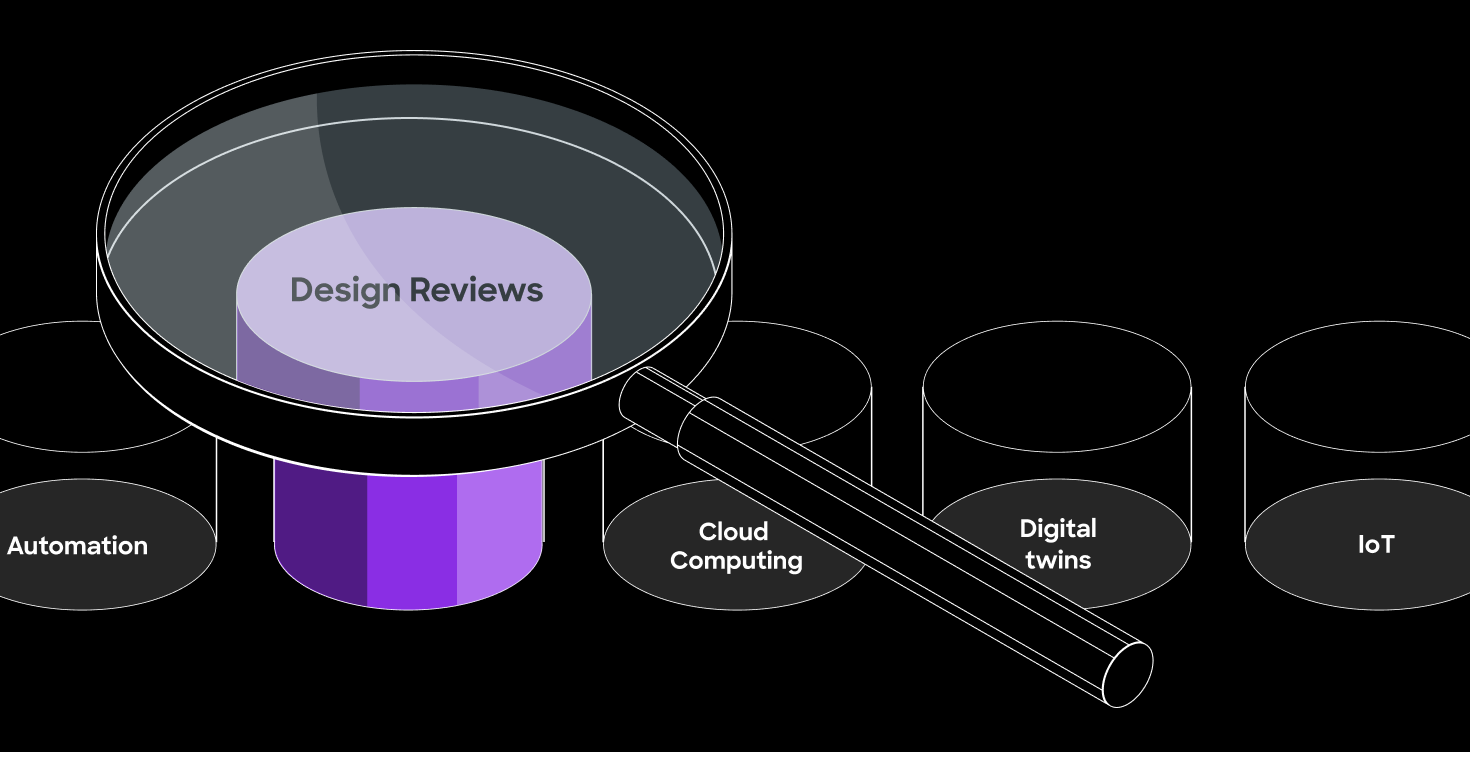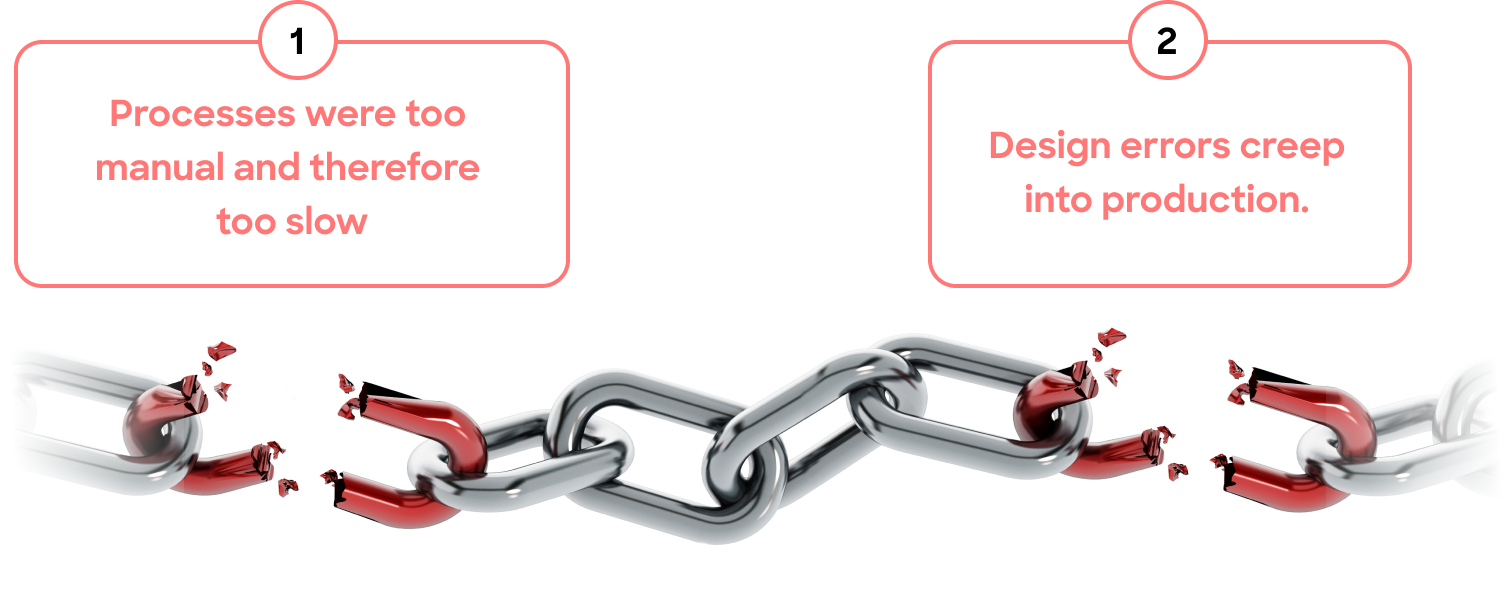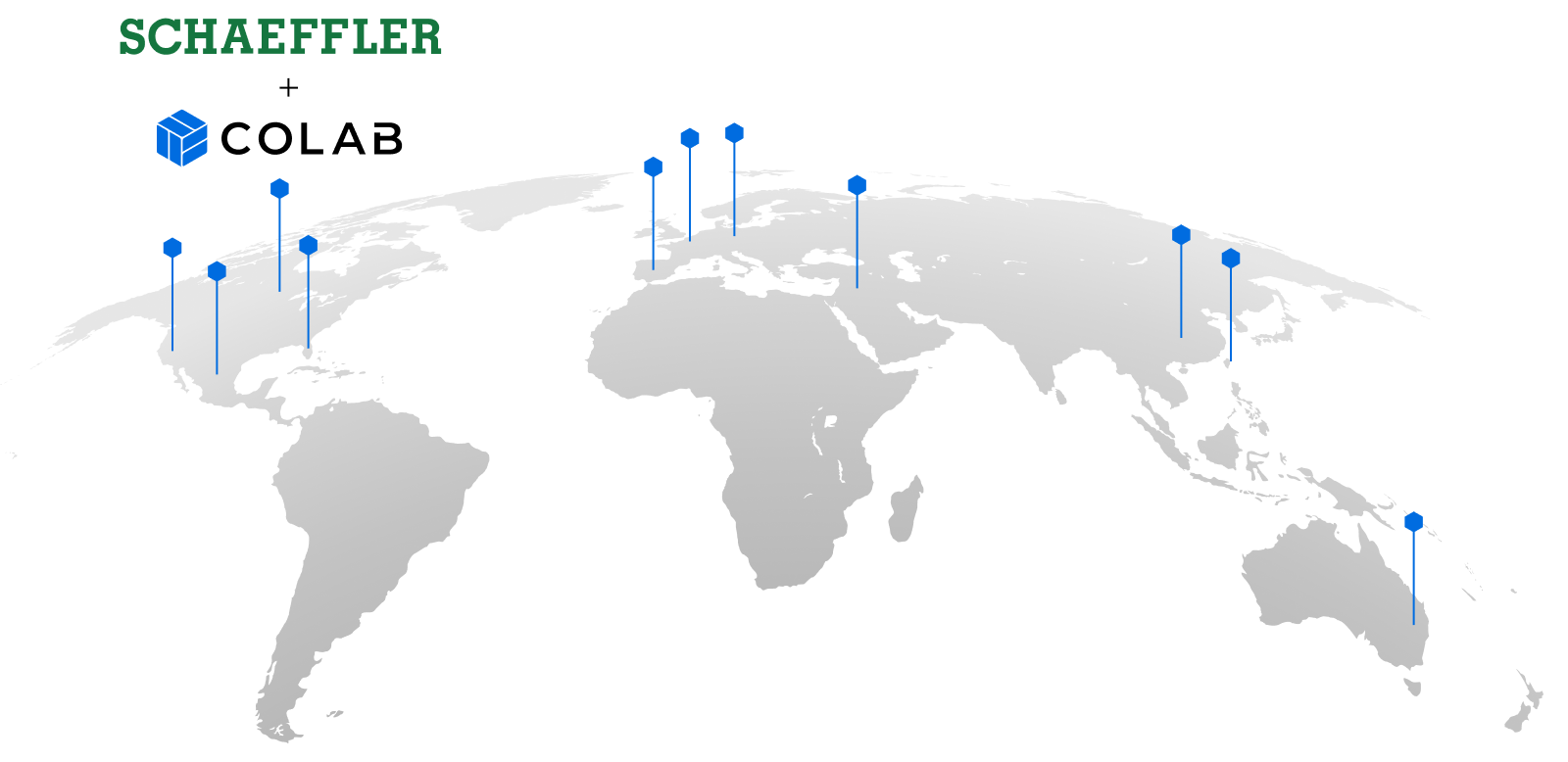
Schaeffler Engineering overhauls core engineering practices
With an initiative from the board to improve digital collaboration, Schaeffler’s R&D team transformed their design review process – starting with CoLab.

A digital transformation challenge hits the Schaeffler team
In 2023, the Schaeffler board doubled down on digital transformation. As part of this, they challenged their R&D team with a major overhaul:
👉 Improve digital collaboration internally and integrate interactions externally with our suppliers and customers.
No small feat.
After digesting the challenge and discussing priorities with engineering and R&D leaders, the Schaeffler team decided:
✅ To transform an organization the size of Schaeffler means re-examining core engineering practices – starting with design reviews.
Why design reviews, right?
Two reasons:
- The Schaeffler team mapped a strong correlation between design quality upstream during product development and manufacturing excellence downstream. Meaning, better design reviews meant fewer errors in production.
- Speed, speed, speed. Schaeffler’s engineering team knew that while the design review process was well-adopted, it was slow. And slow early product development means slow product launches. A liability for Scaeffler’s competitive positioning

Starting with the root-cause failure in design reviews
When the Scaheffler team mapped out the current state of design reviews, it looked like this:
- Upload CAD to PLM. This kicks off the design review process. But not automatically. Each step is done manually.
- Prepare the review package. To do this, engineers use PowerPoint + CAD and drawing screenshots. They add notes to each slide, tagging in the right people. Repeat this process for ~200 screenshots.
- Send the package. That package then goes to the Industrial Engineer, manufacturing, purchasing, packaging, quality, and other global teams.
- Set-up and run the meeting. Schedule in Outlook, run the meeting in Teams. During the meeting, they designate an engineer to take notes.
- Summarize the action items. Once the meeting's done, the notetaker says, “Okay, these are the 100 follow-ups from this meeting.” And hopefully nothing got missed (rarely happens).
- Create the issues list. This action items list goes into an Excel, Confluence or Jira. Each item is manually copy and pasted into the app or spreadsheet.
- Send the issues list. Once the list is done, the engineers sends the list in Outlook.
- Follow-up on action items. This might be done in email, Teams, phone calls or meetings. And when someone makes a change in one place, the team needs to make sure it gets captured everywhere. Back into Excel, PowerPoint, Outlook and Teams.
Rinse and repeat.
This is why Schaeffler chose to solve for design reviews:

Lewis Bragdon, R&D Business Analyst explains: "I've spent a lot of time in design reviews and I’ve seen how information can fall through the cracks.
We saw the opportunity to have all the information in one place. Because there’s confusion that happens when you don't know when a specific design decision was made.
Especially when the only documentation you have was in emails or Teams chats, or a verbal discussion in a conference room.”
Defining the solution to ineffective design reviews
Schaeffler’s R&D team saw three specific opportunities for design review improvement:
- Maximize the amount of feedback and action items captured in reviews
- Simplify issue management
- Find a way to reference historical design decisions
To do this, they also knew they had to look outside their current CAD and PLM software.
After some research, they stumbled on CoLab and knew they had the tool they were looking for.
“The way that the conversation happens on the model–it is sort of effortless,” explains Lewis, “The interface is easy to use and the tasks can be assigned right there on the model geometry.”
With CoLab, feedback generated during reviews is also automatically documented and organized into a database of action items.
That means design reviews, plus any discussion of follow up actions all happens in one place.
Putting CoLab to the test
Using CoLab, Schaeffler gets more reviewers into models and drawings.
As a result, they’re building a better end product.
“Colab helps to improve quality,” remarks Max Podschwadt, Chief Engineer. “It provides more team members with easier access to review models and prints, which leads to overall better reviews.”
Now, the entire engineering team completes reviews faster, while generating thorough documentation.
By automatically documenting design decisions as a part evolves, CoLab helps Schaeffler achieve robust design quality, without the admin headache. This is one of the reasons that Schaeffler’s 50 user pilot quickly grew to 300 users.
“It exceeded our expectations quite a bit, on the scale of participation,” says Lewis. “Our users are very excited about it. It's just word of mouth between the teams."
With several teams across the Americas region onboarded and successful, Schaeffler is looking to roll out CoLab to the entire global engineering group by the end of 2025.

Ready to transform your design review process?
Here’s how it process works after you fill out the form:
Schedule a discovery call. During this call, a CoLab rep will understand your team’s challenges with design reviews today.
A tailored demo addresses your challenges and questions.
Finally, we do a workshop with more members of your team. Your team will have temporary CoLab licenses and participate in a sample design review.


